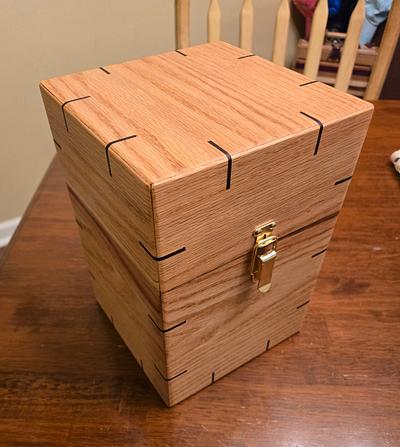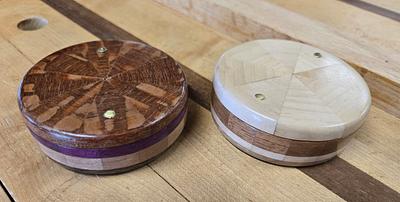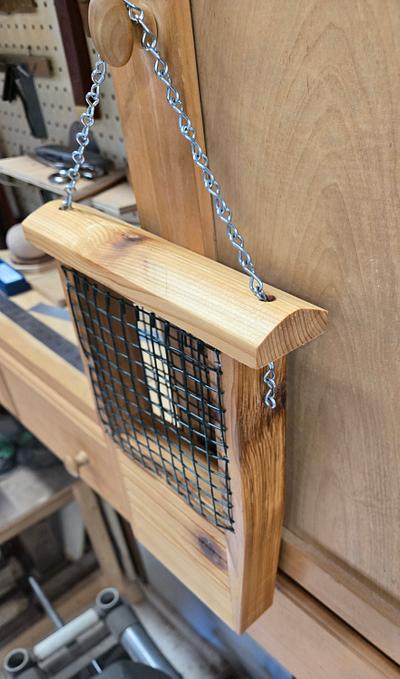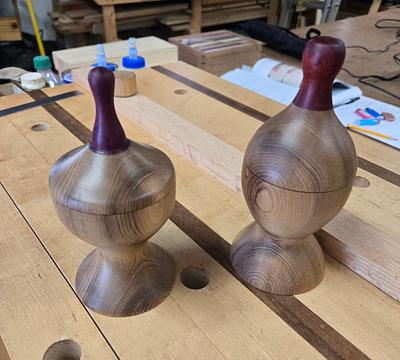Share your craft projects
Make new craft buddies
Ask craft questions
Blog your craft journey
Did You Know These Woodworking Safety Hacks Could Save Your Fingers?
Woodworking safety should be a top priority for all woodworkers. In the workshop, there are numerous hazards that pose a risk to your fingers and overall well-being. However, by adopting practical and lesser-known safety hacks, you can protect yourself from potential injuries and accidents.
In this article, we will not only explore the common safety hazards in woodworking but also share valuable safety hacks that can save your fingers. By following these tips, you can create a safe and healthy work environment while enjoying your craft.
Woodworking safety is extremely important because ignoring safety measures can have serious consequences. Workshop accidents can cause severe injuries that may affect both your personal life and your ability to do woodworking. By making safety a priority, you not only protect yourself but also ensure the future of your craft.
Now let's learn about the practical safety hacks that will help protect your fingers in the workshop. We'll cover everything from using the right safety equipment to creating a safe working environment. So, let's start this journey towards safer woodworking practices!

The Importance of Woodworking Safety Measures
Woodworking safety is not just a recommendation; it's a necessity for maintaining a safe and healthy work environment. Here's why it's crucial:
- Preventing Potential Dangers: Neglecting safety precautions in woodworking can lead to potential dangers and risks for woodworkers. From flying wood chips to power tool malfunctions, the workshop can be a hazardous place.
- Preserving Craftsmanship: Accidents not only impact the individual woodworker physically but can also have detrimental effects on their craft. A serious injury could impede one's ability to continue practicing woodworking.
- Enhancing Enjoyment: Adopting a proactive approach to safety in woodworking projects offers numerous benefits. It promotes a mindset of caution and attentiveness, reducing the likelihood of accidents and ensuring that woodworking remains an enjoyable pursuit for all enthusiasts.
1. Use the Right Safety Equipment
Woodworking can be a fulfilling and creative hobby, but it also comes with its share of risks. To ensure your safety in the workshop, it is crucial to use the right safety equipment. Here are some important points to consider:
Ensuring Proper Usage of Safety Equipment
One of the first things you should do is familiarize yourself with the proper usage of safety equipment. Understanding how each piece works and when to use it will go a long way in protecting yourself from potential accidents.
Wearing Appropriate Safety Gear
Another essential aspect of woodworking safety is wearing the appropriate gear. Here are some key items you should always have on when working in the workshop:
- Hearing protection: earmuffs or earplugs
- Gloves
- Safety glasses
These items may seem simple, but they play a crucial role in safeguarding your well-being while woodworking.
Essential Safety Equipment for Woodworkers
Here are some recommendations for essential safety equipment that every woodworker should have in their toolkit:
- Hearing Protection: Woodworking can generate loud noises that can damage your hearing over time. Invest in quality ear protection such as earmuffs or earplugs to reduce the risk of noise-induced hearing loss.
- Gloves: Proper hand protection is vital when handling sharp tools and abrasive materials. Choose gloves that fit well and provide adequate grip without compromising dexterity.
- Safety Glasses: Protecting your eyes from flying debris is crucial in woodworking. Safety glasses with impact-resistant lenses shield your eyes from dust, wood chips, and accidental tool slips.
- Respiratory Protection: Woodworking can release harmful particles into the air, especially when sanding or cutting certain materials. A respirator or dust mask with a high-efficiency particulate air (HEPA) filter will help you breathe safely.
- Protective Clothing: Wear clothing that covers your arms and legs to protect against splinters and minor cuts. Avoid loose-fitting clothes that may get caught in machinery.
Each of these safety equipment serves a specific purpose in shielding you from potential dangers while working with wood.
By using the right safety equipment, you significantly reduce the risk of injuries and ensure a safe woodworking experience. Remember, prevention is always better than cure when it comes to protecting your fingers and overall well-being in the workshop.
2. Create a Safe Working Environment
When it comes to woodworking safety, creating a safe working environment is crucial for preventing accidents. Let's delve into some practical safety hacks that focus on maintaining a secure workspace in your workshop.
2.1. Ensuring Good Visibility and Proper Lighting
Importance of Workshop Cleanliness
A cluttered workshop can lead to trips and falls during woodworking tasks. By maintaining clear pathways and organized storage areas, you can significantly reduce the risk of accidents related to clutter.
Tips for Workshop Organization
- Store tools and materials in designated areas to prevent obstructions in your workspace.
- Implement a system for keeping your tools and equipment neatly arranged, minimizing the chances of tripping over objects.
Role of Good Lighting
Adequate lighting is essential for enhancing safety and visibility during work. Ensure that all work areas are well-lit to accurately see the details of your woodworking projects and avoid potential hazards.
By incorporating these safety hacks, woodworkers can proactively create a safe working environment that minimizes the risk of accidents, promoting a productive and secure workshop setting.
3. Handling Tools with Care
Woodworking involves working with various tools and equipment, and ensuring their safe handling and maintenance is crucial for a woodworker's safety. Proper tool safety and maintenance not only reduce the risk of accidents but also contribute to the longevity and effectiveness of the tools.
3.1. Keeping Your Cutting Tools Sharp and Clean
Sharp cutting tools are essential for achieving clean and precise cuts in woodworking. Dull tools not only compromise the quality of work but also pose a higher risk of slipping, leading to potential injuries. Here's how you can ensure your cutting tools are sharp and well-maintained:
- Inspecting Blades Regularly: Check for any signs of wear, nicks, or dullness on the blades of your cutting tools such as chisels, hand planes, or saws. Any imperfections can affect the tool's performance and should be addressed promptly.
- Sharpening Techniques: Different cutting tools require specific sharpening techniques. For instance, chisels may need regular honing with sharpening stones or diamond plates, while saw blades might require specialized sharpening files or equipment. Research and learn the appropriate sharpening methods for each type of tool to ensure optimal sharpness.
- Cleaning the Blades: After use, it's important to clean off any accumulated sawdust, resin, or other debris from the cutting edges. Residue can hinder the tool's performance and lead to overheating during use.
- Lubrication: For certain cutting tools such as hand planes, applying a thin layer of lubricant on the blade helps prevent rust and ensures smooth operation.
- Proper Storage: Storing your cutting tools in a dry environment away from moisture and humidity can prevent corrosion and maintain their sharpness between uses.
By incorporating these practices into your woodworking routine, you not only enhance the safety of your workspace but also extend the lifespan of your valuable cutting tools.
4. Educating Yourself on Woodworking Safety Practices
As a woodworker, it's important to always stay up-to-date with the best safety practices in woodworking. Here are some ways you can educate yourself on woodworking safety:
- Stay Informed: Continually educate yourself on the best safety practices in woodworking.
- Books and Online Resources: Seek out reputable books and online resources that provide comprehensive information on woodworking safety. Look for guides that cover a wide range of topics, including tool safety, workshop setup, and personal protective equipment.
- Workshops and Classes: Consider attending workshops or classes focused specifically on woodworking safety. These hands-on learning experiences can provide valuable insights and practical knowledge that may not be readily available through other resources.
- Community Engagement: Engage with the woodworking community through forums, social media groups, or local woodworking clubs. These platforms often serve as great sources of firsthand experiences, tips, and advice on safety practices within the woodworking industry.
- Continuous Learning: Keep an open mind to new safety techniques and technologies as they emerge in the field of woodworking. Stay updated on any advancements or changes in safety standards to ensure you're employing the most effective safety practices in your workshop.
For beginners looking to get started with woodworking projects safely, you can also refer to this comprehensive guide featuring 50 woodworking project ideas. This guide provides a wide range of project ideas along with detailed instructions and tips for beginners to follow while maintaining safety protocols.
5. Prioritizing Focus and Concentration in the Workshop
Woodworking requires concentration and focus to ensure safety and accuracy. Distractions in the workshop can lead to accidents, injuries, and mistakes that can be easily avoided with the right mindset and environment. Here are some practical tips to help you minimize distractions and maintain your focus in the workshop:
- Designate a dedicated workspace: Create a designated area in your workshop solely for woodworking activities. This will help you mentally separate your workspace from other distractions or clutter.
- Organize your tools and materials: Keep your tools, materials, and equipment well-organized and within easy reach. This will save you time searching for items and reduce the chances of getting distracted.
- Eliminate unnecessary noise: Loud noises can be not only distracting but also harmful to your hearing. Wear ear protection or use noise-canceling headphones to block out unwanted sounds and create a quieter environment.
- Minimize digital distractions: Put away your phone or keep it on silent mode during work sessions to avoid interruptions from calls, messages, or social media notifications. Consider using productivity apps or browser extensions that block certain websites or limit screen time.
- Set specific goals: Break down your woodworking projects into smaller tasks with specific goals. This will help you maintain focus by giving you a clear direction and a sense of accomplishment as you complete each task.
- Take regular breaks: While it may seem counterintuitive, taking short breaks can actually improve your focus and productivity. Use these breaks to rest, stretch, hydrate, and recharge before diving back into your work.
- Practice mindfulness techniques: Incorporate mindfulness practices such as deep breathing exercises or meditation into your woodworking routine. These techniques can help calm your mind, improve concentration, and reduce stress.
By prioritizing focus and minimizing distractions in the workshop, you not only enhance your safety but also elevate the quality of your woodworking projects. Remember, a calm and focused mind is the key to a successful and enjoyable woodworking experience.
Conclusion
Woodworking safety should always be a top priority for all woodworkers. By implementing the safety hacks discussed in this article, you can significantly reduce the risk of potential injuries and create a safe working environment in your workshop.
Here are the key points to remember:
- Prioritize safety: Reiterate the importance of prioritizing safety in woodworking projects. Always put safety first and make it a habit to follow proper safety measures.
- Implement safety hacks: Encourage readers to implement the practical and lesser-known safety hacks shared in this article. From using the right safety equipment to creating a safe working environment, each hack plays a crucial role in preventing accidents.
- Be prepared: While these safety measures are effective, accidents can still happen. It is important to be prepared by acquiring knowledge of first aid techniques for woodworking-related injuries. This will enable you to respond promptly and appropriately in case of an accident.
Woodworking is a rewarding craft, but it also comes with inherent risks. By adopting a proactive approach to safety, you can enjoy your woodworking projects while minimizing the chances of accidents or injuries.
Remember, woodworking safety is an ongoing journey. Stay updated on best safety practices through books, online resources, or workshops to continually enhance your knowledge and skills. With a dedication to safety and a commitment to learning, you can create beautiful woodwork while keeping your fingers and yourself safe in the workshop.


















